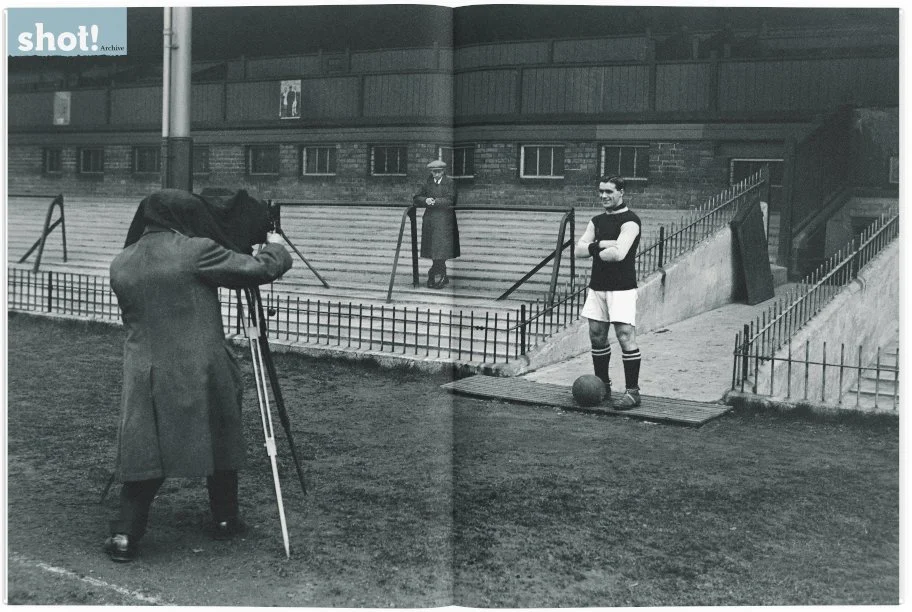Football Photography writing
From When Saturday Comes magazine
Albert Wilkes & Billy Kirton 1920
Photograph by Albert Wilkes Jnr ©Colorsport
Published in When Saturday Comes 235, September 2006
Born 1874, the year Aston Villa were founded, Albert Wilkes was inexorably linked with the club. His CV would include time as a player, scout and director, and he was a qualified referee to boot. His hobbies were music-hall singing and photography, the latter creating a legacy that survives.
Wilkes the player won a League winners medal with Villa in 1900 but when he missed the 1905 FA Cup final (having played in the semi) he took photographs of Villa’s victory and his career began to turn.
On his travels with the team he took his colossal clyto-plate camera and teamed up with writer Jimmy Caton, from the weekly Athletic News. Even the best couldn’t survive by playing the game alone and, though he won five England caps, Wilkes was no superstar. (Joining Villa from Walsall with George Johnson for a £850 combined fee, he remarked that he’d made up the £50.) Most notable of his caps was the game that was the backdrop to the 1902 Ibrox disaster, when 26 died after a wooden stand collapsed. The game was played to a finish but the result annulled. Proceeds of a replay at Villa Park went to the victims’ families.
As his football career faded (via Fulham and Chesterfield) his photography took over and Wilkes set up studios inWest Bromwich in 1909. During the First World War he took pictures of soldiers’ WAGs to send to the front, but the business stationery proudly emphasies sports photography. Wilkes recruited his son Albert Jnr as focus boy and to help transport the unwieldy 15" x 12" plate camera pictured. If it’s Albert Snr under the hood here, then Jnr could well have taken this shot. The subject is Villa’s Billy Kirton, who played once and scored once for England. An honour shared with, among others, Bill Nicholson and Francis Jeffers.
A popular figure at Villa, Wilkes came out of the tunnel on matchdays and lined up the teams on benches for their Topical Times portraits. He became a c lub director in 1934 but died in 1936. His son carried the business through the Second World War (as a War Office cameraman) to his retirement in the 1970s. Hence the Wilkes’ work documented 70 years of west midlands sporting culture, coincidentally almost the period between Villa’s 1890-1900s heyday and their next league title in 1981.
Doug Cheeseman
Football Photography Writing
See more of the Wilkes’ work

